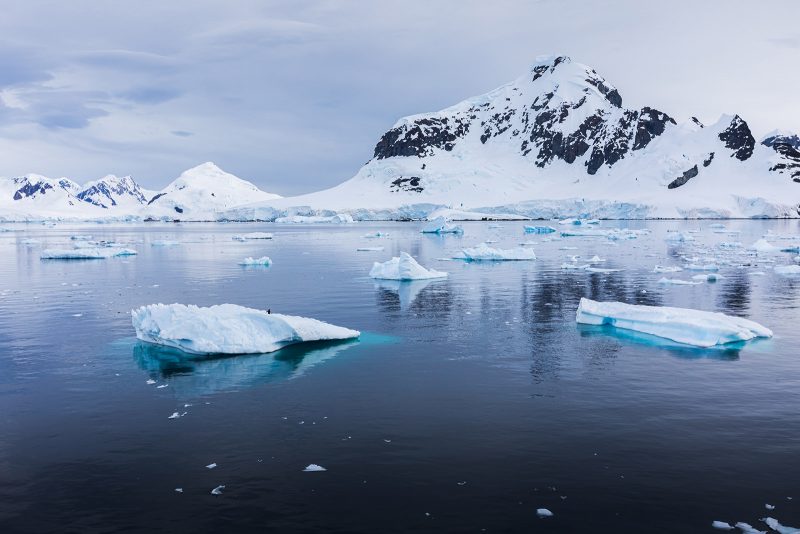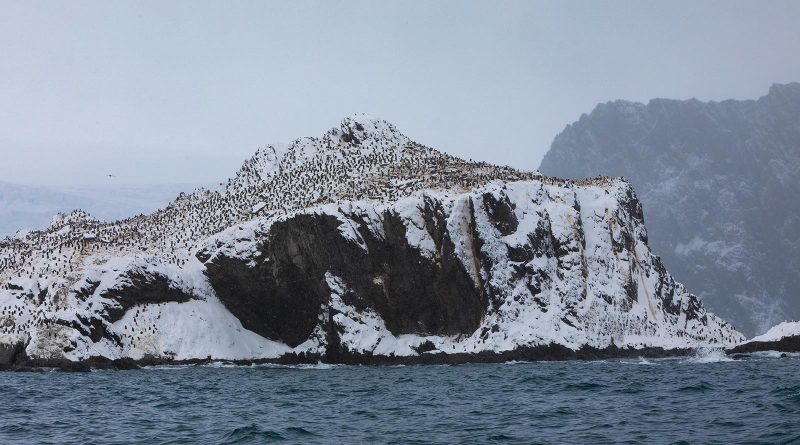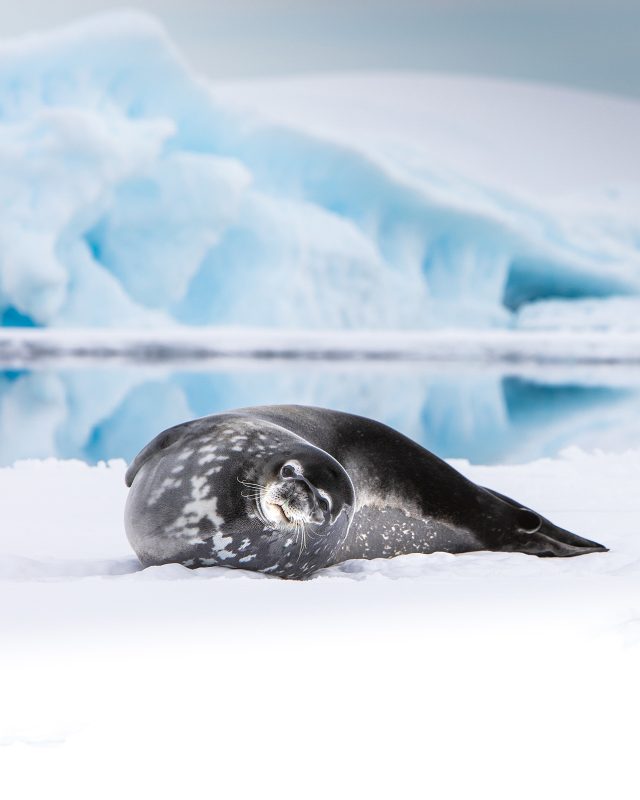How to Plan a Wildlife Photography Trip to Antarctica

Antarctica is a dream destination for many nature photographers, as it was for myself. As a nature photographer from Sweden, I have always had a great passion for ice and cold, remote places, and the wildlife that inhabits these hostile environments.
These locations fascinate me, and Antarctica is no different. I fell in love with it from the very first time I caught a glimpse of the continent, and even more so when I set foot on it to explore and learn more.


I’m passionate about educating others about what I have learned about the white continent, and what I have seen. I am proud to be an Antarctic Ambassador for IAATO, a member organisation founded to advocate and promote the practice of safe and environmentally responsible private sector travel to the Antarctic.
This is an extremely important factor to consider and be aware of when planning a trip to this unique location. Antarctica has a sensitive environment that we are responsible for preserving, wherever we live or come from.
It is a stunning and peaceful land with so much life; life that human beings could easily destroy. I feel so lucky to have experienced this continent, and to be able to create images that will hopefully inspire people to make choices in their own lives that will help protect this place.
Whatever your reasons for visiting, I will give you some tips in this article for your own journey to the magical southern white continent.
How to get to Antarctica
The most common (and easiest) way to get to Antarctica is by ship. This will embark from Ushuaia, down in Argentina. There are a lot of companies that run trips down to the peninsula, but the one I travel with is run by Lindblad Expeditions/ National Geographic.
IAATO has a membership directory on their website of more than 100 companies for you to choose from. These members will operate within the framework of the Antarctic Treaty System, and the international/ national laws and agreements regarding safe and environmentally responsible private sector travel to Antarctica.
By choosing a company from this list, you are ensuring that you are travelling with an organisation that has committed to following the necessary precautions and protocols to have minimal impact on Antarctica’s natural environment.
I highly recommend that you consider these factors very carefully when planning your trip to Antarctica. I would also recommend looking for companies that run trips that are not too big: around 150 passengers maximum will give you a more personable experience.
If you are a photographer, it is also important to make sure that the company will arrange to make a lot of stops. You will want to have plenty of opportunities to jump off and explore Antarctica’s landscape and wildlife on land, to get a different perspective with your camera in hand.
Additionally, I recommend looking for a trip with lectures from knowledgeable speakers arranged along the way, so that you can learn about the incredible place you are visiting from experts in the field.
There are some companies that provide fantastic talks with experienced naturalists and researchers, as well as lectures on improving your nature photography in polar regions. What better way to pass the days travelling at sea?
There will undoubtedly be some wild days on the water, so be ready to experience some of the roughest seas on earth. The Drake Passage can be particularly rough and will probably make you feel sick, with swells larger than you have likely ever seen before. I must admit that I passed out for a whole day and a half, the first time I made the trip!
However, it was the Type D orcas that made me get up on my feet again, as I just had to see them. I have actually heard that a lot of people will not go to Antarctica, even if they want to, because they are afraid of the Drake Passage.
I totally understand, because it can be a really tough (and frightening) part of the trip. But it is all worth it when you arrive!
Read more: Tips for Photographing Landscapes in Polar Regions
Weather conditions in Antarctica
It’s important to be aware that the weather down in the peninsula shifts incredibly quickly. In a single day it can go from full sunshine to a snowstorm, to rain, and back to sunshine again very quickly. It is a rough climate, and you would be extremely lucky if you got heavenly blue skies and calm sea all the time (if that is even possible!).
However, part of the fun of the trip is this unpredictability! It goes without saying that warm, weatherproof clothes, designed specifically for enduring these conditions, are essential, both to your comfort and your ability to take photographs on a trip like this.
You must also ensure that you take care of your camera equipment during such conditions, and make sure you have adequate weatherproof protective gear for it. If you do not have weather sealed cameras and lenses, you must bring ‘rain covers’ to use for your camera equipment.
These covers can still be a good choice for weather sealed equipment anyway, because there can be a lot of salt water spray when you go out on the smaller Zodiac boats to get to land.
The light is always amazing in my opinion, and all of the weather conditions down there will contribute to creating a special scene. It is actually those moody, rough conditions, with crazy light, that will make for the best pictures!
So, I would hope for some crazy weather just for the photographic opportunities that will be presented. A black, stormy sky with a white iceberg in front of it can be stunning. A wild snowstorm with a little bit of light coming through can create a truly magical scene, just waiting to be captured by your camera.
Read more: How to Use Cameras in Extremely Cold Temperatures
When to visit Antarctica
The season for visiting Antarctica runs from October to March. This is the Antarctic summer, with January being the warmest month. However, you can still expect different photographic opportunities within this visiting season.
Springtime (October to November) is the season of love, even this far south! Penguins and seals will pair up and build their nests, preparing for the arrival of chicks and pups at end of November.
If you choose to go from December to January, you will likely see a lot of chicks and small seal pups. These can provide wonderfully endearing photographic opportunities!
Whales can be a bit difficult to see at the beginning of the season, as they are migrating down slowly. The later it gets in the season, the more whales there will be in the area. Opportunities for whale sightings will continue to improve as the season progresses.
If you choose to visit Antarctica in February or March, you will experience the continent in late summer. This time frame offers a number of benefits: you will get the opportunity to explore the area a bit more thoroughly as the ice falls apart, and there are of course better chances of spotting whales.
If you want to see as much of Antarctica as possible, I recommend choosing to visit during the late summer season. When the polar ice melts, you will be able to visit locations much further south than you can during other seasons.
Wildlife in Antarctica
One of the main wildlife attractions that you will get to see down here is of course a variety of species of penguins. There are also a lot of seals, such as Weddell seals, crabeater seals, and leopard seals. And do not forget the many whales!
Whale sightings are my absolute favourite thing to experience, and I will never forget the amazing encounters I have had with them in Antarctica. There are many whale species to be seen, including fin whales, humpback whales, minke whales, blue whales, southern right whales, and sperm whales. The list is long!
There are also many different types of orcas. If you are extremely lucky, you may see the mysterious Type D orca on your way down through the rough seas of the Drake Passage.
Wildlife in Antarctica is usually easy to see, mainly because it is so abundant! If you love birds, this is the place to be. Try not to focus solely on the penguins, as there are also albatrosses, sheathbills that eat penguin guano, skuas, jaegers, sandpipers, allies, gulls, terns, skimmers, shearwaters, petrels, cormorants, shags, and more.
Read more: 9 Things to Know to Get Great Seabird Photos
Tips for photographing wildlife in Antarctica
It is important to always follow the rules set out by the guides of your tour operators. You are never, under any circumstances, allowed to approach any wildlife closer than five metres from them.
If a penguin walks up to you of its own accord (which can be a wonderful experience), this is allowed, but stay calm and do not touch it. The penguin has probably come to investigate you, but do not make any fast movements or put up a big lens (if it is not already held up), so as not to frighten it.
The lenses I would recommend to use when photographing penguins are almost always wide-angle, or other options that are not too zoomed-in. The penguins are often quite close to you, and you may not be able to photograph them with a telephoto lens.
This is not the case when photographing whales (unless they come up to you when you’re in the Zodiac, which can happen). For photographing whales, you will most often need a zoom lens of 100-400mm, or even up to 600mm.
For birds and the whales, who are very active and usually moving quickly, it is useful to have a fast shutter speed. 1/2000-4000th of a second is a good baseline.
For portraits of penguins and seals you won’t need such a fast shutter speed, as they tend to move much more slowly. It can be a good idea to bring a tripod sometimes when you’re on land, or if you want to film anything too. Just watch out for the high winds!
The best part about photographing in Antarctica is that there is always plenty of light, whatever season it may be. As a result, you will not need a lens with a big aperture, or have to worry about your ISO too much.
Composition wise, while shooting in this dramatic landscape, I recommend that you consciously think about what makes an interesting photo.
You should endeavour to get both ’classic’ portraits of the animals, as well as photos where you can see the environment in which they live, and how they interact with, or blend into, the landscape. These animals’ ability to survive in this environment is an extremely important part of what makes them special, after all.
Whenever I’ve been in Antarctica, there are always people that only use their phones to photograph what they see, yet manage to capture very interesting and engaging photos. In fact, they almost always get the best photos when animals decide to come up close!
If you are lucky enough to experience a whale approaching to investigate you, often without much warning, phones or action cameras are usually the best bet, in all honesty.
Finally, if it is possible for you to have two cameras set up with different lenses, I recommend doing so. If you have a zoom lens on a camera and do not have another camera with a wide-angle lens on it, you will not have time to switch lenses as everything happens so fast.
My recommendation, when something exciting suddenly happens and you haven’t got the right lens on, is to put your camera down and just use your phone. You may find that, to your surprise, you get the best pictures or videos in the group!
Read more: What’s the Best Lens for Wildlife Photography?
In conclusion
People always say that they go down to Antarctica for the penguins but return for the ice, and I think that this is true.
Even if you’re making the trip specifically for wildlife, my advice is to not neglect the ice and the incredible photographic opportunities it presents. It contains formations and colours that you will not even be able to dream about now, but that you will be dreaming about long after your trip is over.
Antarctica is a harsh location in more ways than one, but do not be put off visiting by this, as it is also brimming with so much life. It is truly a privilege to visit one of the most perfectly preserved regions on the planet.
Warning: on your first visit, you will surely be bitten by the ”polar bug”, and the only thing you will be able to think about when you return home is how, and when, you’ll get back.
Enjoy your experience, and be sure to follow me on Instagram for some more Antarctic content!














